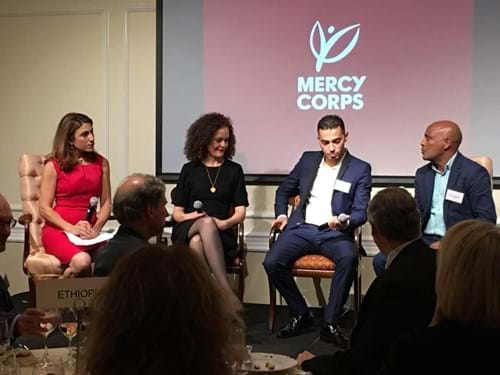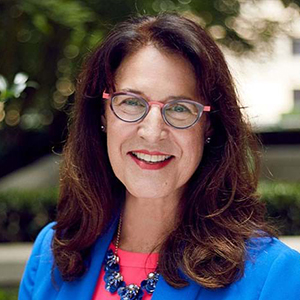
The Story Gap and Crisis in South Sudan
Last January, on International Holocaust Remembrance Day, I stumbled upon a Twitter account called the St. Louis Manifest. Using photographs and documents from the United States Holocaust Memorial Museum in Washington, D.C., the account, managed by software developer Russel Neiss and Rabbi Charlie Schwartz, tells the story of the nearly 1,000 Jewish refugees who left Nazi Germany on the ocean liner St. Louis in May 1939. The ship sailed for Havana, where most of the passengers planned to wait for the U.S. to approve their visas and then travel on to Miami, New York or other American cities where they thought they would be safe.
These folks were the lucky ones, they thought. They had managed to survive in Hitler’s Germany for six increasingly brutal, terrifying years. And they still had the money and the connections to get out: to pay for tickets on the St. Louis, a luxury liner, and for permission to enter Cuba — a privilege which cost $150 per person, or about $3,000 in today’s money.
But, as you probably already know, they were wrong: the passengers on the St. Louis may have been lucky, but they weren’t lucky enough. When the St. Louis got to Havana, only about 30 people were allowed to disembark; under pressure from its citizens, the Cuban government had decided to refuse entry to the rest.
Why? Cuba had already admitted some 2,500 Jewish refugees, and many Cubans believed they were unfairly competing for jobs — which, because of the Great Depression, were scarce. The country’s largest newspapers promoted the right-wing, anti-immigrant views of their wealthy owners. Just before the St. Louis sailed from Germany, some 40,000 Cubans gathered for an anti-Semitic rally in Havana, where a spokesman for Cuba’s former president pushed them — and thousands more who were listening on the radio — to “fight the Jews until the last one is driven out.”
As the Cuban government ordered the ship out of its waters, the captain of the St. Louis tried to find another place to land. The Canadian government refused. “If these Jews were to find a home [in Canada],” the Immigration Minister wrote, “they would likely be followed by other shiploads … the line must be drawn somewhere.” Latin American governments refused. And President Franklin Roosevelt never even bothered to reply to the desperate telegrams from the refugees aboard the ship. Passengers must “await their turns on the waiting list and qualify for and obtain immigration visas before they may be admissible into the United States,” read a U.S. State Department cable sent to the ship as it sailed back to Europe.
In the end, nearly 30 percent of the refugees aboard the St. Louis were murdered in the Holocaust. The rest found refuge in Great Britain or a more temporary reprieve in Belgium, the Netherlands or France (which, of course, soon fell to the Nazis).
I’ve been thinking a lot about those passengers on the St. Louis as I finish up this week’s Mercy Corps board meetings and events — where we’ll be discussing, among other topics, the refugee crisis in South Sudan. Almost 4 million people have fled their homes there, driven away by political violence, drought and famine.
By next March, experts say, more than 5 million people will be displaced, desperately hungry and in need of immediate aid. They won’t have access to food, water, medical care, basic sanitation or safe shelter. They need our attention, and they need it now.
Of course, all those millions of South Sudanese refugees aren’t aboard a boat in the Havana harbor — and if they were, I really don’t know what the best course of action would be. I’m not an expert on immigration and refugee resettlement policy, and I likely never will be. But I know we can do more now than we did then. I know help isn’t impossible; I know we can intervene to make life healthier, safer and a little easier for the displaced people of South Sudan.
We can also make certain these stories get told. I know I always say “less talking, more doing,” but in this case, talking IS doing. People need to know what’s happening on the ground in South Sudan, and right now, they don’t. A quick search of The New York Times’ South Sudan archive finds some truly amazing reporting on what the paper calls the “daily exodus” of South Sudanese people to Uganda and elsewhere — but there’s just not enough of it. International outlets like The Guardian and Al Jazeera are doing a little better, but the fact remains: humanitarian crises don’t sell newspapers, and anyway, the world we live in has more than its share of humanitarian crises, enough to fill the pages of a Sunday Times-sized paper every day of the week.
That’s a story gap but we can close it. We need to tell the truth about what’s going on in South Sudan right now — and not just the tragic stories, but also the stories of resilience and even triumph, of what can happen when people get the kind of help they need. We need to narrow the chasm between what we hear about and what is truly unfolding day after day, week after week, and — in too many cases — year after year.
To that end, one of the highlights of this week’s Mercy Corps board activities was our 2017 Humanitarian Hero Awards dinner, honoring Senator Jeff Merkley (OR) and Senator Todd Young (IN). There is NO question that both of these senators are tremendously deserving of this honor, but as Senator Young reminded us, the real heroes of humanitarian work are those who work in the field. In Mercy Corps’ case, these people work in the toughest places in the world. So I loved the evening’s closing panel discussion featuring Mercy Corps field leaders Su’ad Jarbawi, Omar Al-Tal, Tefera Habteyes and moderator Gayle Tzemach Lemmon [image below]. Instead of going through the programs we have underway to alleviate suffering, build community and plant seeds of HOPE, the panel told us what is happening through the eyes of single individuals whose lives have been forever changed. For the folks in the audience that night, those amazing panelists helped push the story gap closed.

And in this context, the story gap has real consequences. We’ve got to know the facts so that we can make evidence-based decisions on what works and doesn’t — otherwise, the help we provide won’t be any help at all.
But most of all, we must hear the stories of people who have faced unfathomable challenges and who have tackled them with grit and resilience — not just faceless statistics, but the FACES of those people who can, and will, prevail.
We’ll never know what would have happened if more people knew about the St. Louis and its passengers, or about the horrors that awaited them in Hitler’s Europe. We’ll never know who might have been moved to action, or how many people might have been saved, or what catastrophes might have been averted. But we can learn from the past. We can tell untold stories. We can close the story gap — and when we do, we really can make the future a better place.
Read more posts from WE Global CEO and Founder Melissa Waggener Zorkin here.
The latest blogs from WE
Decoding Gen Alpha: A Primer on the Next Gen of Consumers
Why Gen Alpha Will Fuel Spending This Season
Why Reputation Is a Business Driver in Healthcare


